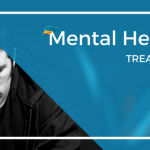Ketamine-Assisted Psychotherapy (KAP) utilizes ketamine in psychotherapy sessions to deepen and expand upon the benefits of psychotherapy for those struggling with depression, anxiety, PTSD, and a variety of other mood disorders. As mentioned in Ketamine-Assisted Psychotherapy (KAP), Part 1: An Introduction, ketamine is an excellent treatment option for individuals who have otherwise been unable to find relief from their symptoms by using more traditional medicines.
Why does ketamine assist in psychotherapy?
Ketamine, in low and controlled doses, helps to temporarily weaken one’s psychological defense mechanisms—unconscious psychological strategies used to protect the self from anxiety stemming from unacceptable thoughts or feelings. In moderation, the use of defense mechanisms is natural and normal; however, excessive use of defense mechanisms does more harm than good and almost always negatively impacts one’s ability to cope effectively with life’s stressors. Thus, softening overactive, maladaptive defense mechanisms allows for deeper self-reflection and psychological processing because the unconscious mind is not protecting the conscious mind from any “unacceptable” truths or perspectives. Dr. John Mendiola, Clinical Director and Founder of https://mindbody-therapeutics.com in New York City, states that “when your ego defenses are reduced, it makes it much easier to process difficult feelings and experiences in order to move forward with your talk therapist. The combination of ketamine infusions in tandem with talk therapy is the gold standard of infusion care.”
Ketamine also allows for increased neuroplasticity in parts of the brain responsible for emotions and higher levels of thinking. Neuroplasticity, in layman’s terms, refers to the brain’s ability to change and adapt, both in structure and function, throughout one’s life and in response to different experiences. The brain’s plasticity is at an all-time high in the first few years of life. It decreases over time as the brain seeks to optimize function, strengthening relevant neural networks and letting irrelevant ones weaken. For instance, ways of responding to stimuli and thinking patterns that have proven helpful and relevant in the past remain. While unhelpful, irrelevant responses or patterns are released. Other factors that affect neuroplasticity include environment, number of new experiences, and mental health.
Studies have shown that major depressive disorder can harm a brain’s structural plasticity or its ability to change its physical form due to learning. Thus, the process of learning—or acquiring new information or skills through experience or by being taught—is hampered; letting go of old, unhelpful thought patterns is also more difficult.
A significant part of the therapeutic process is identifying unhelpful and unhealthy thought patterns a client may hold and challenging them, replacing old thought patterns with new, healthier patterns that lead to a more fulfilling, peaceful life. It requires learning, changing, and adapting, which means it requires neuroplasticity. There are several ways to encourage increased neuroplasticity, but for those who have tried everything to no avail, KAP may be a great next option.
Ketamine, in low and controlled doses, on its own can offer individuals struggling with a variety of mood disorders fast-acting, short-term relief from their symptoms. However, pairing ketamine with psychotherapy is tremendously crucial to experiencing any lasting benefits. Ketamine can be an incredibly useful tool in the process of psychotherapy. Still, psychotherapy is the mechanism by which new perspectives or understandings are explored, comprehended, and solidified into a new mindset and thought patterns.
What is the process of KAP sessions?
Ketamine is administered through three methods:
1. Intranasal administration (a mist into the nasal passage)
2. Intramuscular administration (an injection into the muscle)
3. IV administration
While all options are viable, administering ketamine using an IV is the most controlled method. It allows medical providers to ensure clients get the exact dosage they need based on factors, including their height and weight. As a result, IV administration has also shown to be the most effective method of reducing symptoms, making it the preferred route of administration among most professionals.
On average, a client will be administered ketamine six times within the first three weeks and then receive “booster” administrations once a month for the following 12-24 months. However, the frequency of a client receiving boosters can be adjusted as needed. For example, ketamine administration may be increased to once every two or three weeks if a client continues to experience significant symptoms. The dosage can decrease once a client begins experiencing the level of relief expected.
Each mental health professional will have a specific protocol for incorporating ketamine administrations into the therapeutic process, but most will align in some essential areas. Suppose you are not already an established client of a mental health professional who will guide you through KAP. In that case, you can expect your new provider to require a few therapy sessions initially without the use of ketamine to discuss expectations, symptoms, therapeutic goals, and, importantly, to begin building a therapeutic rapport.
In the first three weeks, about every other ketamine administration will be a KAP session, as will each booster ketamine administration until determined no longer needed. Your mental health provider will be with you throughout the entirety of each KAP session, helping to guide the session productively based on your defined therapeutic goals and any additional information gathered in the preliminary sessions that may be useful.
Since ketamine still offers positive effects without being coupled with psychotherapy, KAP sessions offer heightened insight and new perspectives, and back-to-back KAP sessions can sometimes be too much, too quickly. Avoiding back-to-back KAP sessions allow the client and mental health professional time to come together and debrief what came up during the last session. For example, you may discuss and explore what the KAP session felt like, themes that came up, new perspectives you may have, and what would be helpful to continue to explore more deeply in the next KAP session.Hyperlinks:
https://www.gatewaytosolutions.org/ketamine-assisted-psychotherapy-kap-part-1-an-introduction/



